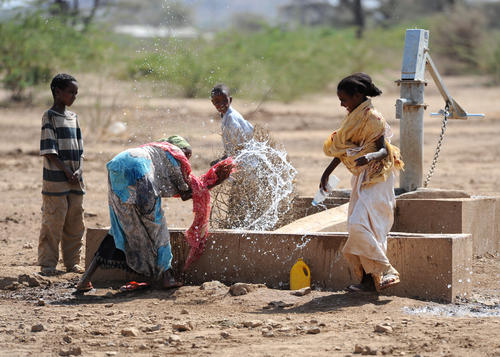Which aspects are integrated in Integrated Watershed Management?
The complexity of IWM is all over and cannot be described in one term. The following examples demonstrate considerations that might come up for assessment and impacts of management options:
The management of a catchment area is very much depending on the personal input and commitment of the land owners. Land ownership is quite often not regulated by laws and often not secured. Therefore, farmers might not be interested in managing land which they do not own by law, but they are interested in mining it. IWM requires for best management options land owner change in order to create larger pieces of land for better conservation, agriculture or reforestation; this is rather not possible without regulatory laws and assessment of the “land value”. Land ownership is crucial for sustainable implementation of IWM and needs special attention at.
Development - either rural or urban – is often coming along with new ideas and concepts and change of a static and well known environment and living conditions. Acceptance of development actions is very much depending on status of education and on self-confidence towards the better. Both are a challenge especially in rural areas and thus locals tend to be resilient against new introduced methods and concepts. IWM is strongly considering this aspect by acting in a holistic and strong participative way. All activities in a watershed area are implemented in close cooperation with and agreements upon and among the local population. Sustainable development is only possible through strong ownership of concepts and ideas by the local population.
IWM acts only in a holistic approach. All kinds of disciplines that effective contribute to best management are incorporated in the approach, e.g. geography, engineering, climatology, social science, justice, geology, hydrology, agriculture, agro forestry, education, etc. The IWM manager shall consider the different disciplines and if necessary consult experts for best knowledge gaining and sharing.
The educational level of IWM stakeholders is widely ranged from illiterate to university level. Thus, awareness and knowledge about IWM is rather high differing in theory and practice. Capacity building measures shall be adapted to the educational level of farmers, local managers, regulatory authorities, ministries, students, researchers and lecturers. There exists no universal teaching book for IWM. Also knowledge and capacity for implementing IWM measures is very much depending on the all over understanding of the concept and the different level and deep inside understanding of practical aspects. Working for IWM at different educational levels require next to sound understanding of the topic a sensitive and adjusted workaround with all stakeholders.
IWM is addressing all kind of natural and human induced or fostered dynamics. A sound understanding of natural processes with regard to water, weather, soil, biomass, agriculture, etc. is necessary to evaluate the natural dynamics of a watershed area. This evaluation is one of the first steps towards the development of sub-catchment management plans, see landscape sensitivity chapter. Natural dynamics are usually overlapping with human induced activities and differentiation is in particular cases rather difficult.
JEDANE, Ethiopia (March 11, 2011)
Image Credit: M. Lindsey 2001 http://upload.wikimedia.org/wikipedia/commons/8/80/US_Navy_110311-N-SN160-227_Ethiopian_children_play_in_the_water_of_a_well_built_by_Seabees_assigned_to_Naval_Mobile_Construction_Battalion_%28NMCB%29_7.jpg
Each watershed area underlies competition of different kind of water users: industrial, agricultural and domestic. Next, size of water users is leading to different empowerment (e.g. through financial resources) and unequal water consumption. All stakeholder groups need to be involved into the action for conflict resolution.
Administrative boundaries are usually not following hydrological units. Watershed areas may fall in several districts with different local administrative actors and willingness for cooperation. Investigation of administrative boundaries and relevant political structures are essential for implementation of sub-catchment management plans.
Sub-catchment management plans are dynamic tools for best management options. Timelines need to be agreed upon, since plans shall be drafted according the needs of the local population. Idealistic long-term plans do not necessarily serve the population when short term action is needed. Vice versa, short term plans shall not ignore long-term needs of the environment.
Sustainable implementation of sub-catchment management plans requires commitment of all local actors. Land management, as one part of IWM, is often conflicting with land ownership and/or the heritage systems of the country. Traditional but inappropriate heritage systems hinder proper land management and IWM. Investigations on the land management systems must be part of watershed management.



